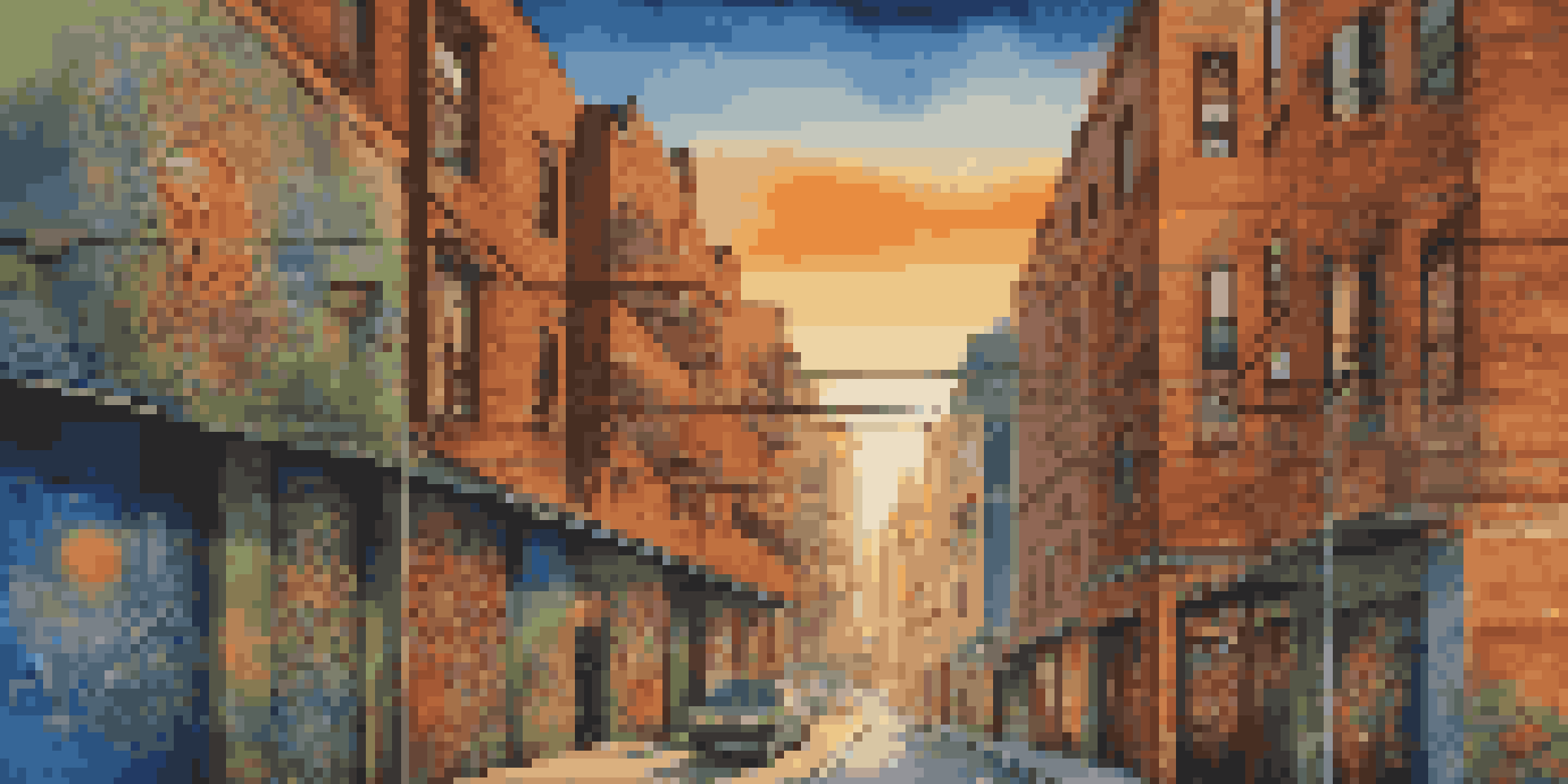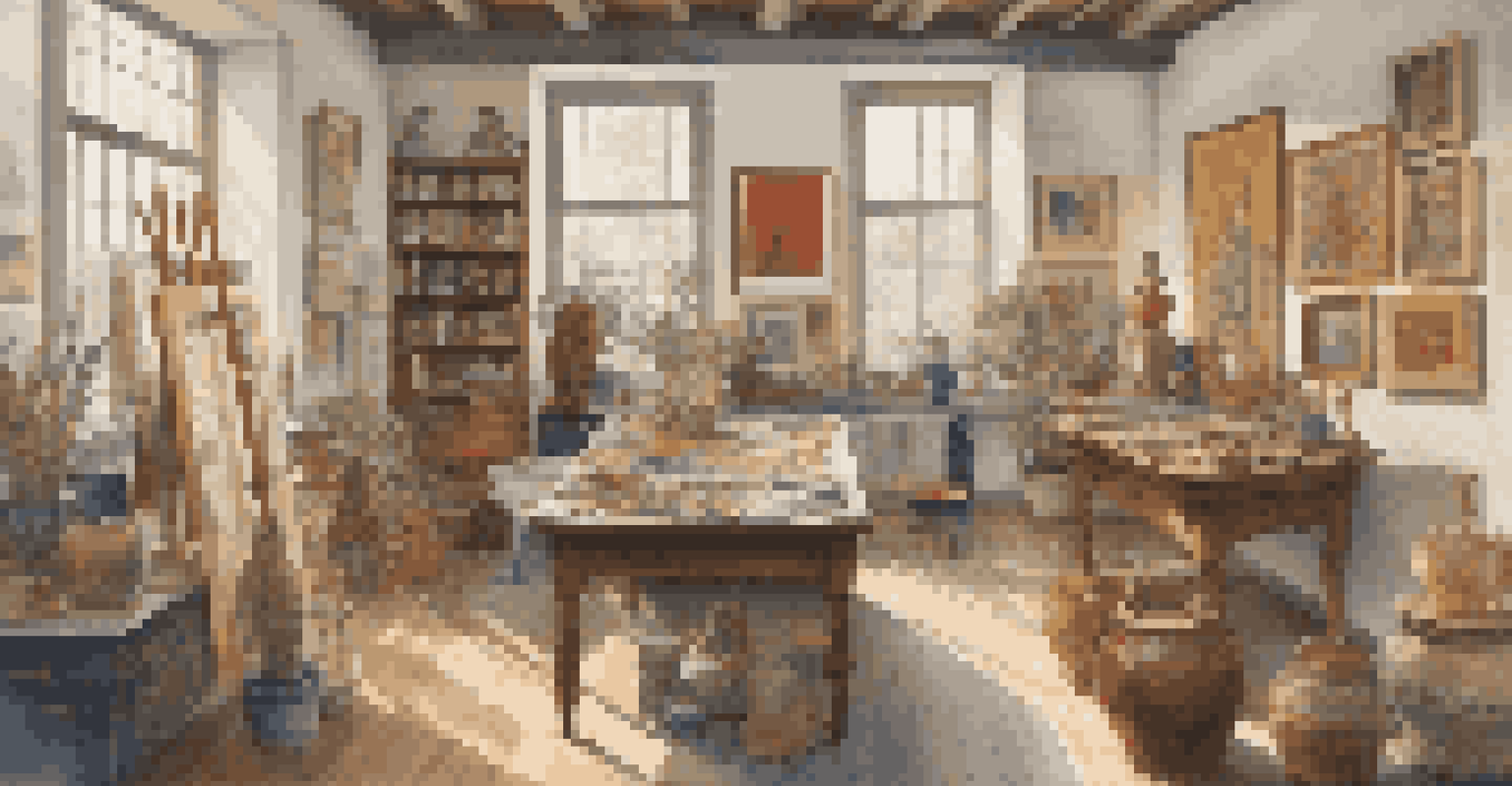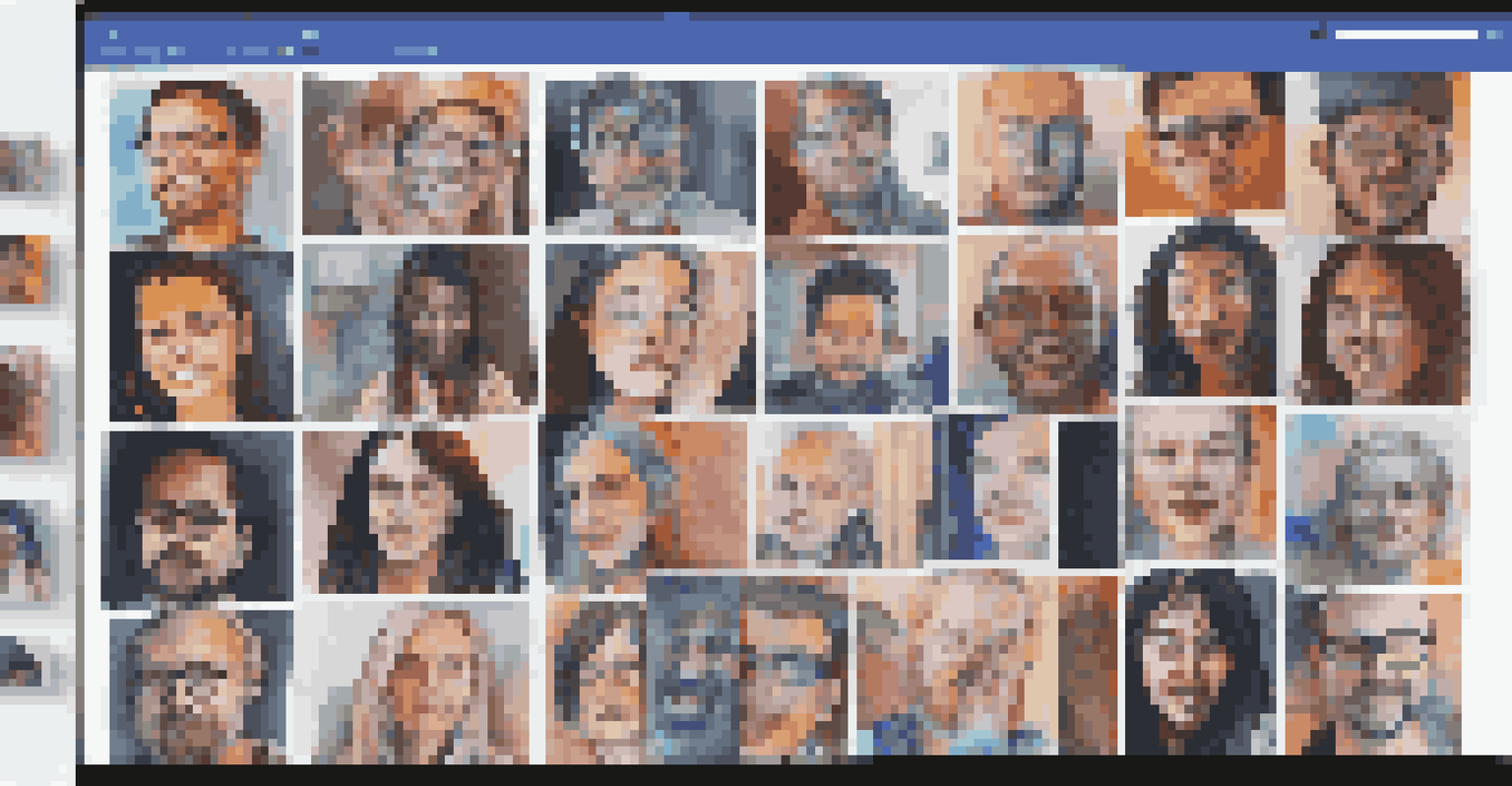Social Media's Impact on Artistic Cross-Cultural Dialogue

Understanding Cross-Cultural Dialogue in the Arts
Cross-cultural dialogue refers to conversations and exchanges between different cultures, especially in the artistic realm. It's about more than just sharing art; it's about understanding and appreciating diverse perspectives. Through these dialogues, artists can find common ground, leading to enriched experiences and innovative collaborations.
Art is a universal language that transcends boundaries and connects us all.
In the realm of art, this dialogue can take many forms, from traditional visual arts to music and performance. Each medium provides unique opportunities for expression, allowing artists to convey their cultural narratives. By engaging in cross-cultural dialogue, artists not only share their stories but also invite others to participate in their cultural experiences.
Social media has become a powerful tool in facilitating this dialogue. Platforms like Instagram, Twitter, and TikTok allow artists from various backgrounds to showcase their work and connect with audiences worldwide. This instant access fosters a sense of community and encourages collaboration that might not have been possible otherwise.
The Role of Social Media in Artistic Exposure
Social media platforms serve as virtual galleries, offering artists a space to display their work to a global audience. This exposure can lead to increased recognition and opportunities for artists, especially those from underrepresented communities. By sharing their art online, they can reach audiences who might never encounter their work in traditional settings.

Moreover, social media allows for real-time feedback and interaction, which can be incredibly beneficial for artists. They can gauge audience reactions, adjust their styles, or even collaborate based on direct comments and suggestions. This immediate connection can help foster a vibrant community of artists and art lovers alike.
Cross-Cultural Dialogue Enriches Art
Artists engaging in cross-cultural dialogue foster understanding and collaboration, leading to innovative artistic expressions.
For example, a painter from Brazil can share their work and receive feedback from a viewer in Japan, creating a unique exchange of ideas and cultural insights. This cross-pollination of perspectives not only enriches the artist's work but also broadens the audience's understanding of different cultures.
Fostering Collaboration Through Online Platforms
Collaboration has always been a vital aspect of artistic creation, and social media amplifies this potential significantly. Artists can easily connect with one another, regardless of geographical barriers, to collaborate on projects or exhibitions. This has led to the emergence of global art initiatives that celebrate diverse cultural expressions.
Diversity is the art of thinking independently together.
For instance, social media challenges like the #ArtChallenge allow artists to respond to prompts and share their interpretations online. This not only fosters creativity but also builds a sense of community among participants. As artists engage with each other's work, they can draw inspiration from different styles and techniques, enriching their own practice.
Additionally, these collaborations often lead to hybrid art forms that blend various cultural elements, creating something entirely new. This fusion of styles can lead to innovative artistic expressions that resonate with broader audiences, demonstrating the power of collective creativity.
Navigating Cultural Sensitivity in Artistic Exchanges
While social media opens doors for artistic exchange, it also raises important questions about cultural sensitivity. Artists must navigate the fine line between appreciation and appropriation when drawing inspiration from other cultures. This awareness is crucial to fostering respectful and meaningful dialogue.
Cultural appropriation occurs when elements of one culture are used by another in a way that can be exploitative or disrespectful. Artists need to be mindful of their sources of inspiration and consider how their work may impact the cultures they draw from. Engaging in open dialogue with those cultures can help mitigate misunderstandings and foster mutual respect.
Social Media Boosts Artistic Exposure
Platforms like Instagram and TikTok serve as virtual galleries, enabling artists to share their work globally and connect with diverse audiences.
By fostering discussions around cultural sensitivity, artists can create a more inclusive environment that honors diverse traditions. This approach not only enriches their work but also promotes a deeper understanding of the cultural narratives behind artistic expressions.
The Influence of Global Events on Artistic Dialogue
Global events, such as political movements or social justice initiatives, often have a significant impact on artistic dialogue. Artists can use social media to respond to these events, sharing their perspectives and engaging with audiences in real-time. This responsiveness creates a dynamic conversation around pressing issues, fostering solidarity and awareness.
For example, during the Black Lives Matter movement, many artists used their platforms to highlight racial injustice and advocate for change. This not only amplified their voices but also connected them with like-minded individuals across the globe. Through art, they were able to express their experiences and emotions, contributing to a larger dialogue about social issues.
By leveraging social media, artists can engage with global events in ways that resonate with diverse audiences. This ability to respond and adapt to current events allows for a more vibrant and relevant artistic dialogue that reflects the complexities of our world.
Building Community: The Role of Social Media Groups
Social media groups and communities play a crucial role in fostering artistic dialogue. These online spaces allow artists to share their work, seek feedback, and connect with others who share their interests. Whether it's a Facebook group for photographers or an Instagram collective for painters, these communities provide support and encouragement.
In these groups, artists can collaborate on projects, share resources, and even host virtual exhibitions. This sense of belonging can be incredibly empowering, especially for emerging artists looking to establish themselves. By surrounding themselves with like-minded individuals, they can cultivate their skills and gain confidence in their artistic voice.
Cultural Sensitivity is Essential
Navigating cultural sensitivity is crucial for artists to ensure respectful exchanges and avoid appropriation while drawing inspiration from other cultures.
Moreover, these communities often celebrate diversity, showcasing a wide range of artistic styles and cultural influences. By participating in these spaces, artists can expand their horizons and gain insights into different creative approaches, further enriching their own work.
The Future of Artistic Cross-Cultural Dialogue on Social Media
As social media continues to evolve, so too will its impact on artistic cross-cultural dialogue. New platforms and technologies may emerge, offering fresh opportunities for artists to connect and collaborate. This ongoing evolution presents exciting possibilities for the future of artistic expression and cultural exchange.
The rise of virtual reality and immersive art experiences could further enhance the ways artists engage with global audiences. Imagine attending a virtual exhibition showcasing art from different cultures, all from the comfort of your home. Such innovations could break down barriers and create even more dynamic dialogues among artists and art lovers.

Ultimately, the future of artistic cross-cultural dialogue on social media will depend on the willingness of artists to embrace diversity and engage with one another. By continuing to foster open conversations and respectful exchanges, the art world can become a richer, more inclusive space for all.